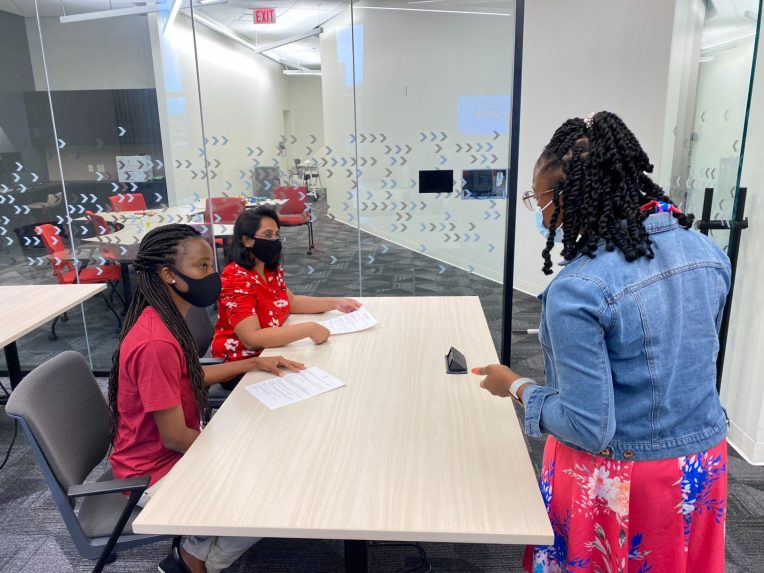Over the last year, we have seen an array of masks and face coverings, but what should we wear to the job interview and how do we wear it properly (something we may not have thought of a few years ago)? Graduates and students are coming in for interviews for internships for jobs not wearing the right masks, and it has been a real turnoff for many employers.
The following article presents a list of recommendations for proper mask etiquette based upon feedback from employers.
Correct mask-wearing: safety first
A properly worn mask must be worn over the nose and over the chin. Anything below the nose and above the chin puts you and the interviewer at risk. It is important to keep in mind that you are wearing a mask for your protection and for the employer’s protection. If you are both wearing masks, the chance of spreading infection decreases significantly versus only one person wearing a mask.
Articulation
Before you select a mask to wear for an interview, be sure you can be heard clearly and that you can articulate through the mask without sounding muffled. You can practice at home in front of a mirror, record yourself, or practice by speaking to someone directly while wearing it to make sure you are able to get your message across. It is important to remember that half of your face is covered, so consider the following verbal and non-verbal cues:
- Verbal–Tone of voice (you should be loud, but do not scream).
- Verbal–It is important to project and articulate.
- Non-verbal–Keep in mind that facial expressions are harder to read (smiles, for example).
- Non-verbal–Consider the story your eyes are telling.
- Non-Verbal–Use hand gestures when you can.
- Non-Verbal–Be mindful of messages conveyed by overall body language.
Options are limitless
COVID-19 in some respects has helped the fashion industry turn lemons into lemonade with regard to mask options. It is important that the mask you choose contains at least two layers of material or cloth. Masks give a job seeker options to coordinate with what they are wearing. One may consider wearing a solid cloth or a mask with a pattern. Various designers or individuals who think out of the box sometimes create masks that stand out and include designer logos. Always keep in mind to consider safety first, but a unique pattern can be a conversation starter and can help you stand out.
Masks worn to interviews can also be disposable (surgical type) or can be cloth. Safely should always be the first priority when considering what mask to wear to an interview. Be sure to check CDC guidance.
Incorrect type of mask
With positive creativity comes a negative effect in terms of incorrect masks. There are incorrect types of masks, such as a bandana, which does not protect against the spread of the virus, and those with valves, which may let in unfiltered air. In addition, avoid wearing a face shield (buff), which essentially is a thin and breathable cloth that wraps completely around your neck and can be pulled up over your chin and nose. These shields do not offer the proper protection, and you may get sick.
Refrain from wearing a dirty-looking mask. Note that cloth masks should be crisp and fresh and washed regularly. In addition, disposable masks should be disposed of after regular use and are not intended to be worn for extended periods of time.
Consider steering away from masks that reflect your political or social affiliation. It is challenging enough to get to the interview phase, so an interview with an employer is not the time or place to make a political or social statement via your mask. Masks that can be deemed sarcastic or offensive should also not be worn to an interview. Keep it professional at all times.
Religious affiliations
Keeping religious affiliation in mind, if you wear a niqab, hijab, burka, or another face covering, it is imperative to wear at least two layers, and cover the nose and mouth.
Where is that smell and noise coming from?
Stay away from smoking prior to the interview, and do not chew gum or jostle candy under your mask.
Conclusion
Always keep yours and the interviewer’s health and safety in mind when masking up for an interview. Be courteous in these in unprecedented times. There are many things to consider even in terms of shaking the interviewer’s hand. If you are uncomfortable in doing so, it is acceptable to do a small wave or place your right hand over your heart to nod your head to share a warm, heartfelt hello.
Written by: Ihor Andruch, courtesy of the National Association of Colleges and Employers

